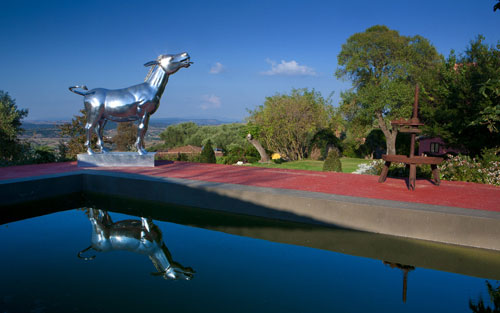Discover the charming town of Ploaghe, located in the province of Sassari, Sardinia. With a population of 4520 inhabitants, Ploaghe boasts a rich history dating back to the pre-nuragic and nuragic periods. The area is dotted with numerous nuraghi, providing evidence of human presence over the centuries.
In Roman times, Ploaghe was known as Plubium, a thriving center even before the Carthaginian domination. Destroyed by the Vandals, the village was rebuilt and renamed Ploraka, eventually evolving into its current urban settlement.
During the Middle Ages, the town was part of the giudicato of Torres and later came under the rule of the Malaspina family, the Aragonese, and finally the giudicato of Arborea. In 1350, it returned under Aragonese control and was definitively incorporated into the Kingdom of Sardinia.
- Barony of Ploaghe: Under the Aragonese rule, along with other towns, Ploaghe constituted the Barony of Ploaghe. The first baron was Serafino di Montagnana.
- Church of San Michele: The area is home to the Romanesque church of San Michele di Salvennor dating back to the 12th century.
- Art Collection: The parish house houses a rich art collection featuring works from various Italian and foreign artists spanning from the 14th to 19th century.
The local dialect is part of the northern Logudorese variant of Sardinian with phonetic influences from Sassarese near the city bearing that name.
Ploaghe is renowned for its traditional craftsmanship, especially for weaving used in creating carpets and tapestries with specialized techniques like “punto”.
Easily accessible by road or rail, Ploaghe is well-connected to the region’s main road network. Additionally, the railway station provides connections to nearby locations such as Osilo, Chiaramonti, and Nulvi.
For adventure enthusiasts and nature lovers alike, paragliding can be enjoyed from Mount Santa Giulia near the town.
With its rich history and surrounding natural beauty, Ploaghe is a must-visit destination when exploring this region.











